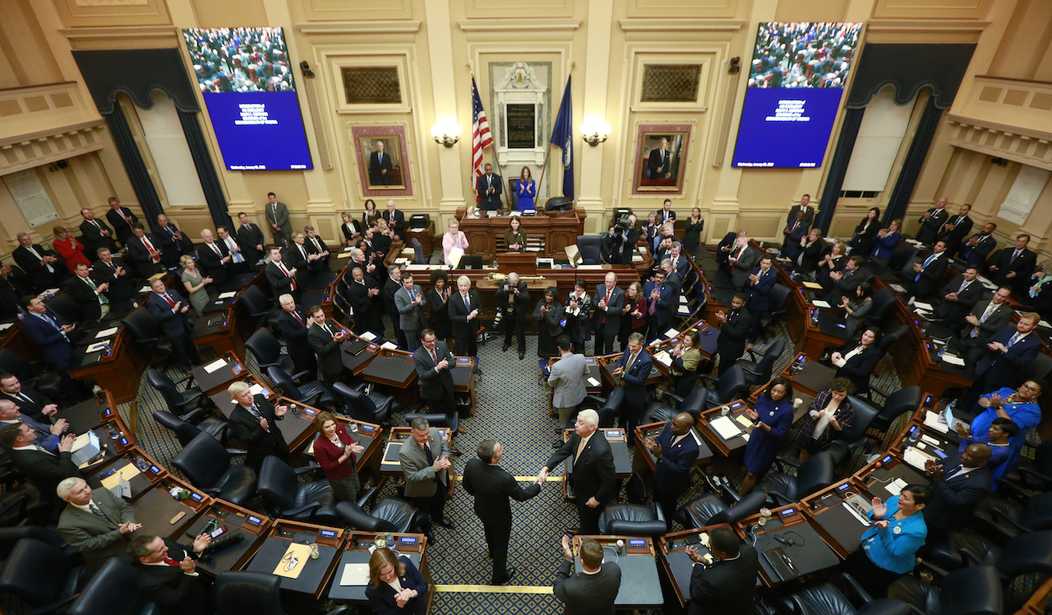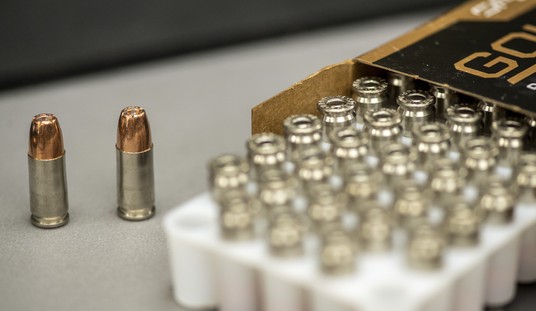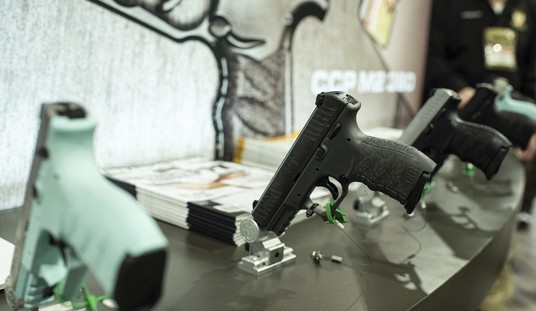With two weeks left in Virginia’s legislative session, anti-gun lawmakers are working hard to make sure that as many gun control bills as possible get to Gov. Ralph Northam’s desk. Even though the centerpiece of his agenda, HB961, was defeated in a Senate committee when four Democrats voted against it, there are still several truly awful pieces of legislation that House and Senate Democrats are working on, and it looks like the sponsors of the competing House and Senate versions of “red flag” legislation have struck a deal on what the final legislation will look like.
The lawmakers sponsoring the Senate and House versions of an extreme risk protection order, also known as the “red flag” law, have come to an agreement, which largely reflects the Senate’s version.
The bill has been heavily debated in both chambers and is part of a package of gun control legislation backed by Democratic Gov. Ralph Northam that has dominated much of the session. Most of the bills have advanced in some form in both chambers.
Sen. George Barker, a Democrat from Fairfax County who is sponsoring the Senate version, said at a House Public Safety committee meeting Friday he and the House patron, Democratic Del. Rip Sullivan, have agreed on Barker’s version, with a few tweaks. The bill passed out of a House committee Friday, and a Senate committee will take up Sullivan’s version, which will be identical to Barker’s, next week. Sullivan confirmed the House and Senate are in agreement.
The Virginian-Pilot newspaper reports that Barker says he’s confident the modified bill will pass both the House and Senate and be signed by Gov. Ralph Northam, which is not great news. One sliver of a silver lining, however, is that the Senate version is slightly less terrible than the version passed by the House of Delegates, though it still has several major issues.
The bill would require a commonwealth’s attorney or police officer to ask a judge or magistrate to issue an emergency risk protection order after they do an investigation.
Once the order is issued, police have to first give the person the opportunity to voluntarily give up their guns. If they don’t, police have to get a search warrant and come back for the guns.
It’s a change from the original House version, where the search warrant was served at the same time as the risk order. Barker said the change quelled some senators’ concerns about police seizing items other than guns in someone’s home if the warrant is delivered immediately.
After 14 days, the person under the order gets a hearing to determine if their guns will be kept for longer, though they can ask for a delayed hearing if they need more time to prepare a defense.
Because the bill requires commonwealth’s attorneys (that’s what Virginia calls prosecutors or District Attorneys) or police to go to a judge, it’s likely that even if the red flag law goes into effect, it won’t be used in many parts of the state. A total of 91 of the state’s 95 counties have declared themselves to be Second Amendment sanctuaries, and my guess is that as soon as Gov. Northam signs the bill, we’ll see a push at the county level to get sheriffs and commonwealth’s attorneys to pledge that they won’t use the new gun seizure law.
In those cases where law enforcement does go to a judge to issue an emergency risk protection order, the subject of that order won’t be allowed or even informed that there’s an effort underway to strip them of their right to keep and bear arms. The first time an individual subjected to one of these orders will learn that their rights have been taken from them is when police contact them to tell them to give up their guns. Only after two weeks have passed will the individual get their day in court.
Because the hearing is technically a civil matter, those subject to a red flag order won’t have the opportunity to use a public defender if they can’t afford an attorney. That will place a huge burden on many Virginians who will be forced to either defend themselves against trained prosecutors, or come up with the thousands of dollars in attorneys fees that it will take to fight the ERPO order in court.
Those are some of the problems from a constitutional perspective. Practically and pragmatically speaking, the agreement reached between House and Senate Democrats poses another huge problem; it does nothing to actually address or help individuals who’ve been determined by a judge to be a danger to themselves or others. Their guns will be taken, but they’ll be left with their knives, pills, car keys, matches, gasoline, and anything else they might have in their home that they could use as a weapon against themselves or others.
The words “mental health” do not even appear in the red flag bills introduced in Virginia’s legislature, though supportive lawmakers claim the legislation is “a way to help the mentally ill.”
It isn’t. It’s a gun control bill masquerading as a mental health bill, and while lawmakers are pushing the proposal, they’re continuing to let the state’s mental health system itself exist in a state of crisis.
Virginia’s nine public psychiatric hospitals — housing a larger number, proportionately, than almost any other state — have been operating at more than 90% of capacity for the past three years. They peaked above 100% this summer and again in September and have been above 95% pretty much every week since Feburary, state Department of Behavioral Health and Developmental Services data show.
Eastern State, just outside Williamsburg, has hit that 100% or higher level more than once this year.
“We are in a crisis,” Virginia Secretary of Health and Human Resources Daniel Carey told the General Assembly’s joint subcommittee on mental health services last week.
But the increases the General Assembly approved still left per-capita spending on community mental health services well below the national average — at $54.62, compared to the national average the year before Gus Deeds’s suicide of $93.50. That year, Virginia’s number was $42.46, or less than half the national average.
That gap was pretty much the pattern through the 1990s and into fiscal year 2014.
The result: Virginians get much less community care than do most Americans. The utilization rate here is 14.25 people per 100,000, or barely 60% the national average of 22.99, according to data collected by the federal Substance Abuse and Mental Health Services Administration.
The state’s suicide rate has been climbing in recent years, but Virginia’s drug overdose death rate has absolutely skyrocketed during that same time period. Ss we’ve pointed out here before, in states where “red flag” laws have been on the books for years, the overall suicide rate has increased, not declined, so it seems willfully ignorant for Democrat lawmakers to assume that a red flag law in the state will alleviate the crisis. Instead, it will only strip Virginians of their constitutional rights, while leaving those truly in crisis to wrestle with their problems on their own.









